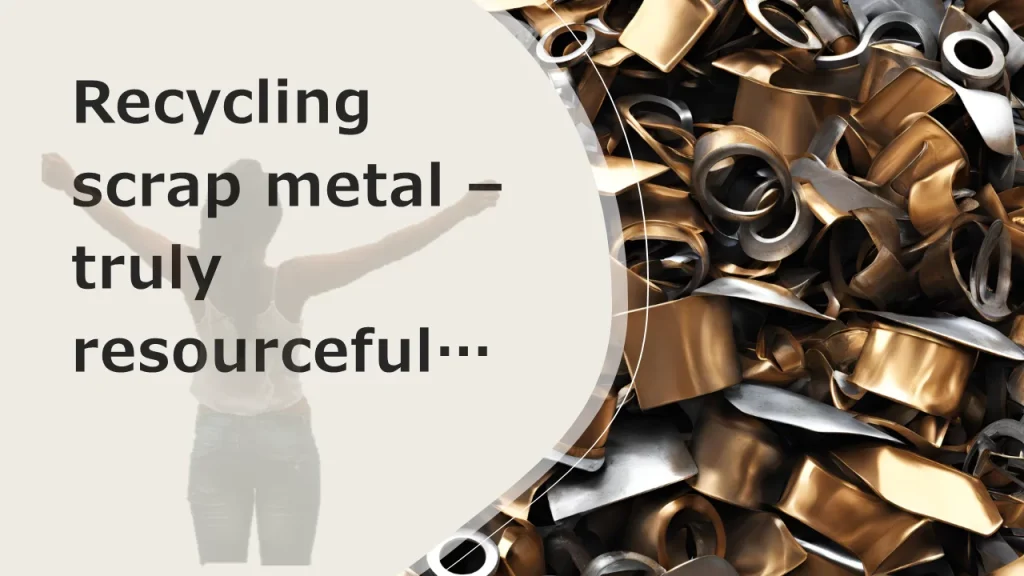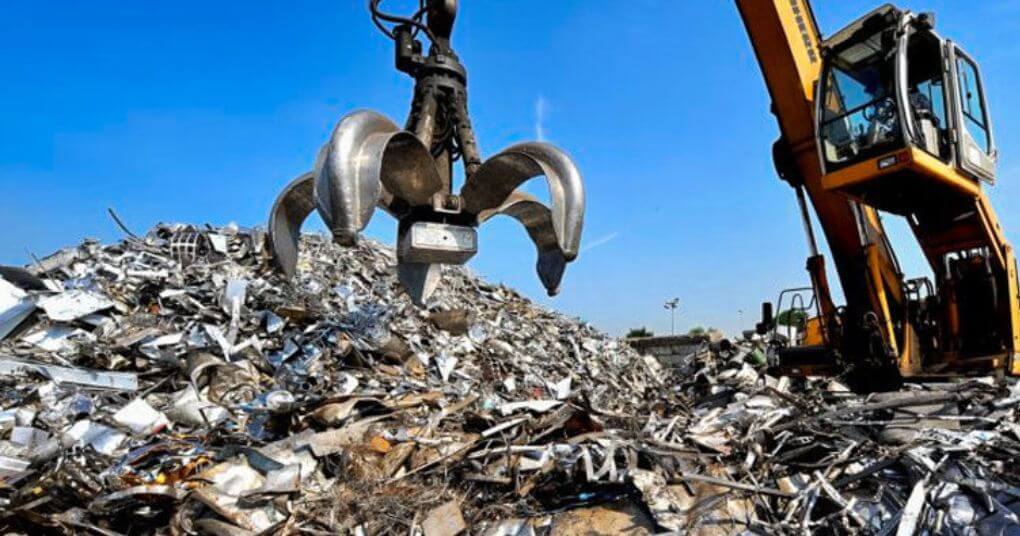The recycling of scrap metals has proven to be an indispensable activity in this world as it conserves natural resources, minimizes environmental effects, and offers a lot of economic benefits. Compared to the common discussion of paper and plastic recycling and glass recycling, scrap metal recycling usually gets neglected despite its heavy advantages. This article shall discuss the various benefits that recycling scrap metals has, from environmental conservation and energy saving, thereby contributing to economic growth and resource efficiency.
Table of Contents
ToggleScrap Metal Recycling Introduction
- Introduction to scrap metal recycling as that process includes collection, processing, and reuse of discarded metal materials from any old vehicle, appliance, or construction waste. There are many varieties of metals that recycle many times without losing any of their original properties and are also highly valuable in recycling processes, such as steel, aluminum, copper, and brass.
- Then comes classification of the metal, crushing, smelting, and refining. The reclaimed metals will subsequently serve as a series of supply sales to producers that produce new products using largely the same recycled materials. This conserves valuable resources and reduces demand for virgin material.
- Recycling is one of the ultimate steps which are being undertaken today as the global demands for metals increase day by day for proper handling of the finite resources. This has several benefits ranging from environmental and economic ones, which save energy
Environmental Benefits of Recycling Scrap Metals

The major benefits received from recycling of scrap metals are environmental-related benefits. Some of the means through which the recycling process assists in solving environmental issues include the following:
Control of Greenhouse Emissions
So much CO2 and other greenhouse gases are emitted while mining, refining, and making virgin ore. Since no energy is needed to mine, recycling in scrap metal results in fewer harmful emissions made. The U.S. Environmental Protection Agency reports that recycling of metals saves up to 500 million tons of greenhouse gas emissions each year.
Low Emission Levels
Mining and smelting of metal ores lead to emission not only of air but also of water pollutants. Mining disrupts natural ecosystems, and it may eventually poison water sources through destructive runoff. Recycling of scrap metal eliminates such processes and therefore reduces pollution as well as the impact of the environment associated with the production of metals.
Protection of Natural Habits
Mining activities have extreme destructive impacts on natural environment and ecosystems of wildlife. Extraction of metals also destroys forests, rivers, and other ecologies. Recycling scrap metal reduces the demand for mining and lets different ecosystems survive through the conservation of biodiversity.
Sustainable Waste Management
Metal recycling reduces the rate at which metal wastes are directed to the landfills. Metals do not degrade; they do not rust over time. Once in a landfill, they take up space naturally and remain for longer. Wastes removal from landfills and putting them into a clean environment save energy through scrap metal recycling.
Metal Energy Conservation Through Recycling
This is a very important advantage: significant energy saved by recycling scrap metal. As compared to mining, extracting and smelting of new metals from raw materials, the amount of energy to recycle metals is way much lesser.
Aluminum Recycling
It saves as much as 95% of the energy used in producing aluminium from bauxite ore. This is a significant saving of energy, and translates to benefit for the producer in terms of saving cost and reduction of emissions in the environment. For example, the amount of energy required to harvest one barrel of oil can be saved by recycling one tonne of aluminium.
Steel Recycling
Steel is the other commonly recyclable metal, and metal recycling saves 60-74% of energy that is consumed in the production of virgin steel from iron ore. This has a reduced environment impact besides providing an economical source of steel production.
Copper Recycling
Recycling of copper saves nearly 85% of the energy allocated for the production of new copper from its ore. Copper is mass used in terms of electrical wiring, plumbing, and other industrial machines; hence copper recycling preserves so much energy for all industries.
Apart from saving energy, which also saves on emissions and promoting the environment, it also reduces the production cost to producers. This makes recycling a more attractive option than other forms of metal production.
Economic Advantages of Scrap Metals Recycling
There are various economic advantages of scrap metals recycling. First, it helps in retaining money within local economies and encourages a sustainable industrial methodology. Some of the key economic advantages follow:
Reduced Manufacturing Cost
Recycled metals are less expensive compared to virgin materials because they provide an avenue of saving the cost for manufacturing industries that manufacture their commodities using metals. It saves them money and enables these companies to compete globally, reducing their impact on the environment at the same time.
Contribution to Global Economy
The global scrap metal recycling industry can be estimated at millions of dollars wherein various countries export and import scrap metals to cater for their manufacturing requirements. Metal recycling is an important trading in the global supply chain since most of the countries recycle and do not have natural resources of metal.
Innovation Boost
This also sparks technology innovation through the demand for recycling and reusing metals. Increased technological advancement in recycling increases efficiency in the recycling process and provides new methods of using recycled metals in manufacturing. Inventions are said to be driving towards sustainable development, which fosters circular economies .
Employment Generation through Recycling Industry
Apart from creating employment in the economy, recycling of scrap metals also generates employment at varied levels. The industry of recycling incurs labour expense during the collection, sorting, processing, and sale of the recycled metals. Some of the broad areas where recycling presents employment opportunities are;
Collection and Sorting
Individuals collect scrap from companies, construction sites, among others. These metals are sorted and ready for recycling purposes.
Workplaces
The plants will need the supply of human labor to operate in such a setting to process, haul the materials as well as monitoring the processes of melting and purifying.
Manufacturing
Manufacturers will purchase the recovered metals from dealerships and use them to manufacture new products thus supporting the jobs in the manufacturing industries.
Development of Technology
Better technologies to recycle over time, plus new jobs for research and development, eventually lead to new inventions in the recycling process.
The scrap recycling industry supports more than 500,000 jobs inside the United States alone with a collective economic impact of more than $117 billion annually according to the Institute of Scrap Recycling Industries .
Preservation of Natural Resources
Recycling scrap metal will always form a part of finite natural resource conservation, especially when reversioning becomes increasingly hard due to mining difficulties. The global population and industrialization keep on increasing the demand for raw materials; however, natural metal reserves are limited and extraction comes at a cost expressed environmentally.
Increased Mining
This means that recycling minimizes the requirement for new mining operations. It helps in conserving ore deposits and extends the life of earth’s lasting natural resources. Lesser mining also reduces the energy used up in mining, which directly benefits the environment.
Water Conservation
It requires huge quantities of water in extracting and processing of metals, which, for the most, become contaminated during the process. Reducing the extracting of metals decreases the loads on those sources of water, otherwise, potentially applicable to create both water scarcity and pollution.
Landfill Use is Minimized
- The landfill does hold a lot of concerns because it is not just an unsustainable form of waste disposal but a form of a pollution source. Space taken by these metals in landfills can then leach harmful chemicals into the soil and even water supply over time.
- Scrap recycling reduces the amounts of non-biodegradable metals that enter streams and reduces the loads on landfills. Consequently, the potential risks of leaking toxic components, such as lead and mercury, into ecosystems along with further possible long-term environmental damage are reduced as well.
Circular Economy and Scrap Metal Recycling
One of the key activities through which this concept of the circular economy whereby reuses, recycles, and re-purposes the material from a single to a non-single use is advanced involves scrap metal recycling. Since waste is reduced and resources get used as long as possible, yes, there is much more of a bright future about it.
Resource Efficiency
The addition of the recycled metals in the processes will enhance the resource efficiency of the manufacture that also reduces the use of virgin resource utilization. It is in line with the precepts of circular economy which believes and respects the efficiency and sustainability.
Waste Minimization
The scrap reduction through metal recycling will dramatically reduce the wastes made by the industrial activities hence reducing their contribution to the environment in general.
Sustainability
Recycling metals tends to be one of the effective means of contribution towards sustenance as it provides a source of replacement for metal extractions, cuts the resource extraction, reduces energy intake, and minimizes environmental degradation.
Types of metals to be recycled
There are not so different kinds of metals. The efficiency in recycling varies between the types of metals. However, there are two major categories which are: scrap metals divided into ferrous and non-ferrous metals:
Ferrous Metals
Ferrous metals contain iron and are ferromagnetic. They range from everyday common items like steel and cast iron, commonly used in construction, autos, and household appliances, to the lesser known, but still major commercial products used to produce steel, for example. Among all these, they rank as among the most recycled; for example, steel is highly recyclable and normally recycled into a new manufacturing product.
Non-Ferrous Metals
Non-ferrous metals are those which contain no iron in them or are nonmagnetic, so the list of such metals is aluminum, copper, brass, zinc, and lead. Non-ferrous metals are, per ton, more valuable than ferrous metals and, therefore, come into great relevance in the scope of recycling. Among non-ferrous metals, aluminum and copper is found to be among the most recycled metals because these have witnessed higher usage under industries in the domains of electronics and transportation.
Conclusion
Recycled scrap metal is an activity quite helpful to the environment; it saves energy while boosting the economy as well as conserving valued natural resources. Actually, the benefits that come with recycling scrap metal are too many and diverse: a reduction in greenhouse gas emissions, job creation, and promotion of innovation-many of them.
By embracing recycling as part of a broader circular economy, we can make the best use of our natural resources, in an efficient and sustainable manner; contribute to further reduction of human activity’s impact on the environment, while boosting economic development; and, looking into the future, strengthen recycling infrastructure and technologies throughout the world to multiply the current good effects of scrap metal recycling.

